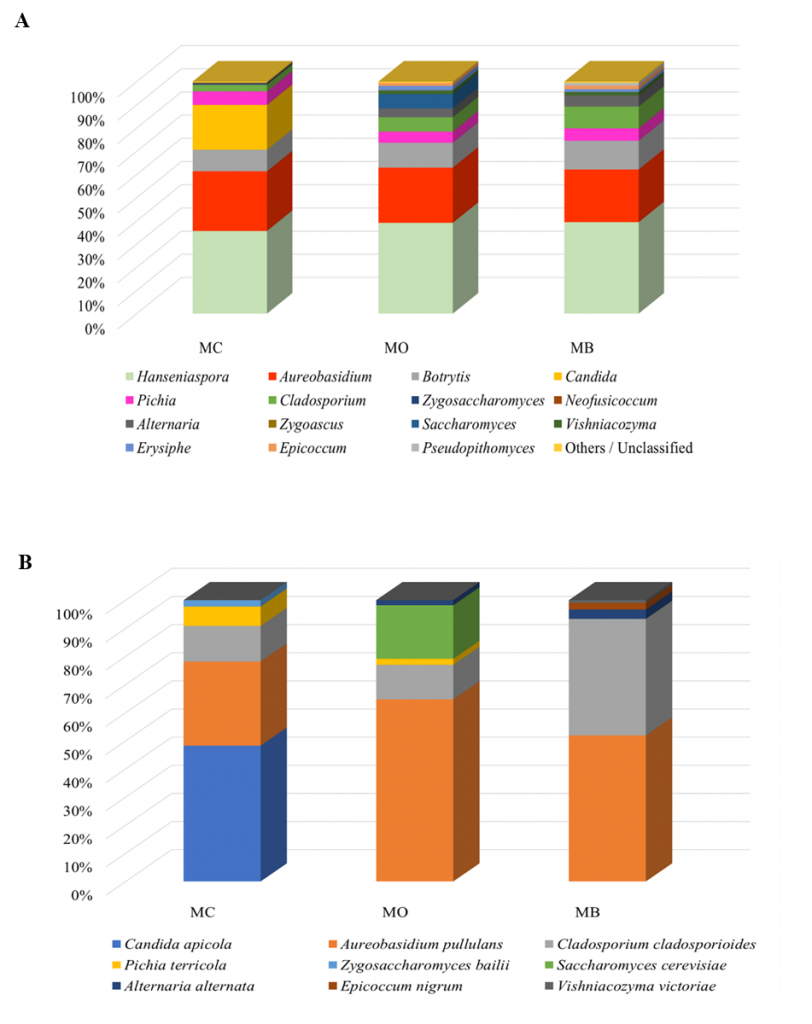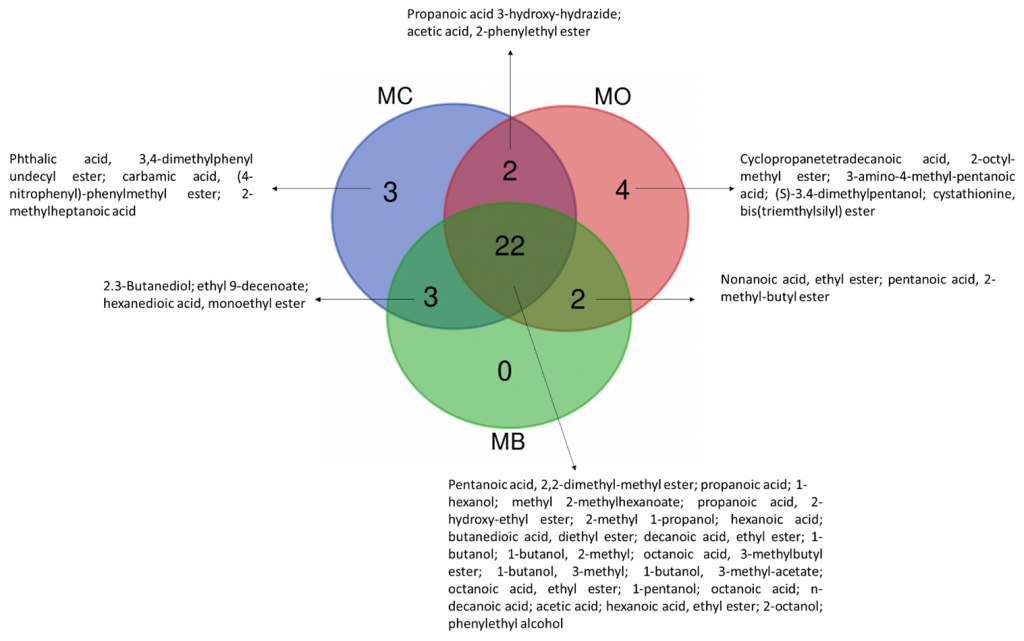By Rosanna Tofalo
Italy is characterized by a high level of richness in terms of grape varieties, with nearly 600 cultivars listed in the Italian National Register of Grapevine Varieties. In particular, the Abruzzo region shows 29530 ha of vineyards, mainly in the province of Chieti (22940 ha), and in total represents 6% of the Italian wine production. The main grape varieties present in Abruzzo region are Montepulciano, Trebbiano, Passerina, Montonico, and Pecorino, among others. The Montepulciano cultivar, with over 35,000 ha of vineyards is the main symbol of Abruzzo region and the first historical evidence of its importance for the Abruzzo region dates back to 1792. Actually, it is used for the production of high-quality red wines like Montepulciano d’Abruzzo Colline Teramane, and Terre Tollesi (or Tullum) wines which gained the DOCG (Designation of Controlled and Guaranteed Origin) recognition.
Several studies showed the key role played by the native vine microbiota during the winemaking process. Microbes can originate from vineyard soil, grape, or be transported by animal vectors (bees, insects, and birds). In this context, it is important to remark that it is crucial to understand the population dynamics from vineyard to cellar to improve wine production. The grape microbial community is influenced by several factors and one is the vineyard management. Farming practices are generally based on the use of agrochemicals, such as fertilizers and pesticides. However, consumers are demanding more sustainable and eco-friendly practices, leading to the affirmation of organic and biodynamic practices. Conventional vineyards are usually treated with several chemicals, while organic/biodynamic farming are based on crop rotation, green manures, compost, natural fertilizers and pesticides, and biological pest controls.
Therefore, a better knowledge about the influence of farming practices on grape/wine microbial populations could be exploited to produce high quality wines such as Montepulciano d’Abruzzo. Recently, it has been highlighted that the agronomic practices could influence Montepulciano d’Abruzzo wine volatilome, and shape grape-borne fungal community. Next Generation Sequencing (NGS) analysis revealed a core of 6 genera (Cladosporium, Botrytis, Hanseniaspora, Pichia, Alternaria, Aureobasidium). Interestingly, genera with biological control were present only on biodynamic and organic grapes (Vishniacozyma spp., and Epicoccum spp.). Four genera (Zygosaccharomyces, Zygoascus, Candida, Neofusicoccum) were present only on conventional grapes. Saccharomyces and Pseudopithomyces genera were present only on organic or biodynamic grapes, respectively. Concerning fungal species A. pullulans and Cl. cladosporioides occurred in all samples. P. terricola was detected in only on conventional and organic grapes, while Alternaria alternata in organic and biodynamic ones (Figure 1A). C. apicola and Z. bailii occurred only on conventional grapes, while S. cerevisiae on organic, and Vishniacozyma victoriae and Epicoccum nigrum on biodynamic grapes, respectively (Figure 1B).
 Figure 1. Relative abundance of grape fungal community detected by NGS at harvest time in conventional, organic, and biodynamic samples. A: main genera detected; B: main species detected.
Figure 1. Relative abundance of grape fungal community detected by NGS at harvest time in conventional, organic, and biodynamic samples. A: main genera detected; B: main species detected.
Organic and biodynamic managements favoured the microbial metabolic activities which could determine different wine styles obtained through spontaneous fermentations. In fact, a better aroma complexity was associated with organic and biodynamic wines. Conventional wines showed a lower content of esters, and a higher concentration of higher alcohols than organic and biodynamic ones.
A core of 22 compounds was detected and was made up of 9 esters, 8 higher alcohols, and 5 organic acids. Organic and conventional wines were characterized by the presence of 4 and 3 unique compounds, respectively (Figure 2).
The different aroma profile is probably related to the agronomic management applied, which – in turn – is able to shape microbial communities and could enrich grapes with specific aroma precursors. The highest aroma complexity associated to organic and biodynamic wines suggested that more sustainable farming practices could be applied to a vineyard like Montepulciano. A better understanding of the diversity of yeast in organic and biodynamic wines may constitute a predictor for quality and overall flavor, while also informing the aroma and the bouquet of the wine.

Figure 2. Venn Diagram showing the volatile organic compounds unique in the different wines or shared by them.
Those interested in a longer length report can download the working paper at:
https://doi.org/10.1016/j.foodres.2022.111577

Rosanna Tofalo, is an associate professor at the Faculty of Bioscience and Technology for Food, Agriculture and Environment (University of Teramo, Italy). She teaches on wine and food microbiology. She carries out her research on microbial genetics and physiology, on yeasts and bacteria metabolism such as the production of secondary compounds during the fermentation process or enzymatic activities in order to select strains for biotechnological applications. She co-authored more than 100 scientific publications. ORCID: https://orcid.org/0000-0002-8940-0224.
Email contact: rtofalo@unite.it

